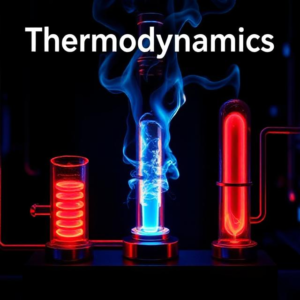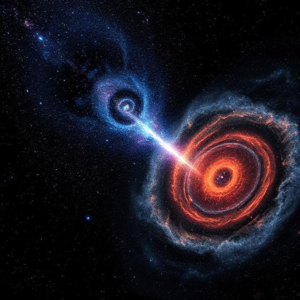Thermodynamics is the study of energy, heat, and how they interact with matter. It’s about understanding how energy moves and changes in different systems, like engines, refrigerators, or even the weather. Let’s break it down step by step.

1. What is Energy?
Energy is the ability to do work or cause change. It exists in many forms, like heat, light, or motion. In thermodynamics, we focus mostly on heat and work, which are the ways energy can be transferred or transformed.
2. The Four Laws of Thermodynamics
Thermodynamics is governed by four fundamental laws that describe how energy behaves. These laws help explain everything from how steam engines work to why ice melts in your drink. Here’s a simplified explanation of each law:
Zeroth Law of Thermodynamics:
This law is about temperature. It says that if two objects are each in thermal equilibrium (same temperature) with a third object, then they are also in thermal equilibrium with each other. Essentially, it defines what temperature is: if two objects have the same temperature as a third, they must have the same temperature as each other. This is why we can say things are “the same temperature” when they are in equilibrium.
Example: If you have a cup of coffee, a spoon, and a thermometer, and the spoon and the thermometer are at the same temperature as the coffee, then the spoon and the thermometer are also at the same temperature.
First Law of Thermodynamics (Law of Energy Conservation):
Energy can neither be created nor destroyed, only transferred or converted from one form to another. This means that the total amount of energy in a closed system (one that doesn’t exchange energy with the outside) remains constant.
Formula:
Example: If you heat up a pot of water, the heat energy you add will increase the internal energy (temperature) of the water. The energy doesn’t vanish, it just changes form.
Second Law of Thermodynamics:
This law talks about entropy, which is a measure of disorder or randomness in a system. The second law says that in any energy transfer or transformation, some energy will become unusable (usually in the form of heat). As energy is transferred, systems naturally move toward a state of higher entropy or disorder. This is why, for example, heat flows from hot things to cold things, and why you can’t create a perfect, 100% efficient engine.
Example: If you open a bottle of perfume, the scent molecules spread out into the air (they go from an ordered, concentrated state to a more disordered, spread-out state). Similarly, heat will always move from something hot (like a stove) to something cooler (like a pan).
Third Law of Thermodynamics:
This law says that as the temperature of a system approaches absolute zero (0 K, or -273.15°C), the entropy (disorder) of the system approaches a minimum. At absolute zero, the system is perfectly ordered and the energy of the system is minimal.
Example: In theory, if you could cool something down to absolute zero, the particles would stop moving completely and the system would be in a state of perfect order.
3. Key Concepts in Thermodynamics
- Heat: Heat is a form of energy that flows from a hot object to a cooler one. It’s what makes things like boiling water or melting ice possible.
- Work: Work is the energy transferred when a force is applied to move an object, like when a gas expands in a piston or a fan blows air.
- Temperature: Temperature is a measure of the average kinetic energy (motion) of particles in a substance. The faster the particles move, the hotter the substance is.
4. Applications of Thermodynamics
Thermodynamics has many real-world applications:
- Engines: Car engines and power plants convert heat energy into work (movement or electricity). Understanding thermodynamics helps make them more efficient.
- Refrigerators and Air Conditioners: These devices use the principles of thermodynamics to remove heat from one place and move it to another (keeping food cool, for example).
- Everyday Life: When you heat food in the microwave or feel the warmth of the sun, thermodynamics is at work!
5. Why It’s Important
Thermodynamics helps explain how the universe works. It’s essential in fields like chemistry, physics, engineering, and even biology. Whether designing new technologies, understanding natural processes, or studying the universe’s evolution, thermodynamics is fundamental to it all.
So, in summary, thermodynamics is all about how energy moves and changes form, with rules that govern how heat, work, and other energy transformations happen. It’s a key part of understanding everything from everyday appliances to the entire universe











